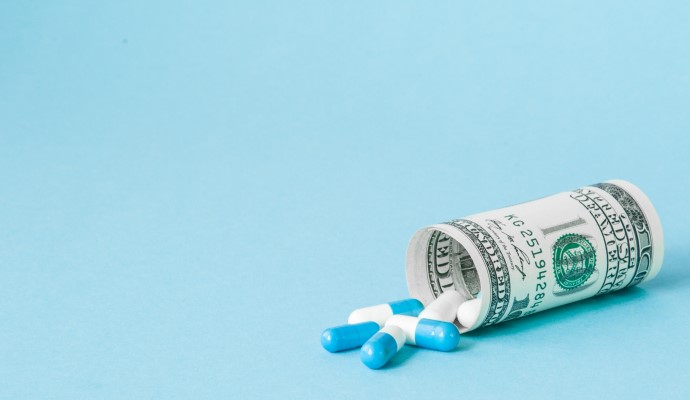Marketing Linked to Billions in Medicare Drug Spending; AHA to Square Off Against HHS Before SCOTUS
Pharmaceutical marketing to consumers led to hundreds of billions in Medicare drug spending. AHA has a SCOTUS court date against HHS over 340B drug payments.

Source: Getty Images
- Welcome back to work after a long (and for many in the Northeast rainy) weekend. Direct-to-consumer marketing appears to be paying off for pharma companies as far as Medicare drug spending is concerned. Meanwhile, AHA is taking its case about 340B drug payments to the Supreme Court.
Direct-to-Consumer Marketing Drives Billions Medicare Drug Spending
Medicare drug spending reached $560 billion from 2016 through 2018, with pharmaceutical marketing accounting for nearly $324 billion in overall spending, according to a GAO study.
Of the 553 advertised drugs in the study, researchers found Medicare Parts B and D spending for 104 and 463 drugs, respectively. About half of this spending was for three categories of drugs that treat chronic medical conditions: arthritis, diabetes, and depression.
Notably, some of the drugs with the highest Medicare spending also had the highest DTC spending. Overall spending is expected to increase with newer, more expensive drugs and an increase in beneficiaries. READ MORE
SCOTUS Set to Hear Case on 340B Drug Payment
The US Supreme Court recently announced that it will hear an ongoing debate over cuts to 340B drug payments to Medicare hospitals. The case will be heard during the Supreme Court’s upcoming term, which starts in October. A decision is expected sometime next year.
The case was brought on by the American Hospital Association (AHA) and other national hospital groups seeking to overturn HHS’ decision to reduce Medicare reimbursement to hospitals in the 340B Drug Pricing Program by nearly 30 percent.
Hospital groups led by the AHA challenged the cuts, arguing that reduced drug payments would harm access to care since the 340B Drug Pricing Program includes safety-net hospitals. An appeals court did not agree with their arguments in August 2020, ruling in favor of HHS. READ MORE
Level of Education Linked to Health Disparities, Outcomes
Educational attainment is one of the key social determinants of health influencing health disparities, according to the inaugural America’s Health Rankings Health Disparities Report from United Health Foundation. Particularly, the report found stark health disparities in mental and behavioral health among those without a high school diploma and those who have graduated college.
Households headed by someone without a high school diploma were six times more likely to be food insecure than those headed by someone who graduated college. Overall, one in four households without a high school education faced food insecurity. Additionally, households headed by individuals without a high school education had a 30.7 percent poverty rate, which is six times higher than the 5 percent poverty rate for households headed by individuals with a college degree. READ MORE
HHS Sets Sights on Surprise Billing Among Commercial Plans
The Biden administration has issued an interim rule that regulates surprise billing in commercial health plans and employer-sponsored health plans, CMS announced.
“No patient should forgo care for fear of surprise billing,” said HHS Secretary Xavier Becerra. “Health insurance should offer patients peace of mind that they won’t be saddled with unexpected costs. The Biden-Harris Administration remains committed to ensuring transparency and affordable care, and with this rule, Americans will get the assurance of no surprises.”
The interim final rule with comment period mandates that patients cannot receive surprise medical bills for certain emergency services nor can they receive surprise bills for services delivered by an out-of-network provider at an in-network facility. READ MORE
Ochsner Looks to Expand Remote Patient Monitoring Across the US
While many healthcare providers are just now getting into the remote patient monitoring arena, Ochsner Health has scaled its platform to a national level, and is now monitoring more than 20,000 people in health plans across the country.
And still, says Julie Henry chief operating officer for the New Orleans-based health system’s digital medicine department, “we’re learning lessons each and every day.”
Ochsner, which has a long history of adopting innovative telehealth and mHealth technologies, launched its first RPM program in 2015, focusing on hypertension. The health system added diabetes in 2017, and more recently has developed protocols for cholesterol and COPD management. Other programs, addressing conditions like asthma and musculoskeletal medicine, will come eventually. READ MORE
AI-Powered App to Catch Early Signs of Alzheimer’s Disease
Researchers at Michigan State University are developing artificial intelligence technology that will use an algorithm to scan speech and vocabulary patterns in order to catch early signs of Alzheimer’s disease.
Jiayu Zhou, an associate professor in MSU's College of Engineering, is leading the project’s artificial intelligence development. MSU is also working in collaboration with Oregon Health & Science University and Weill Cornell Medicine. The project aims to code an easily usable and accessible smartphone app to help assess the necessity of follow-up medical diagnoses.
Currently, there is no cure for Alzheimer’s disease. However, early detection could assist doctors and researchers in the development of treatment to slow or halt the disease before irreparable damage occurs. READ MORE
